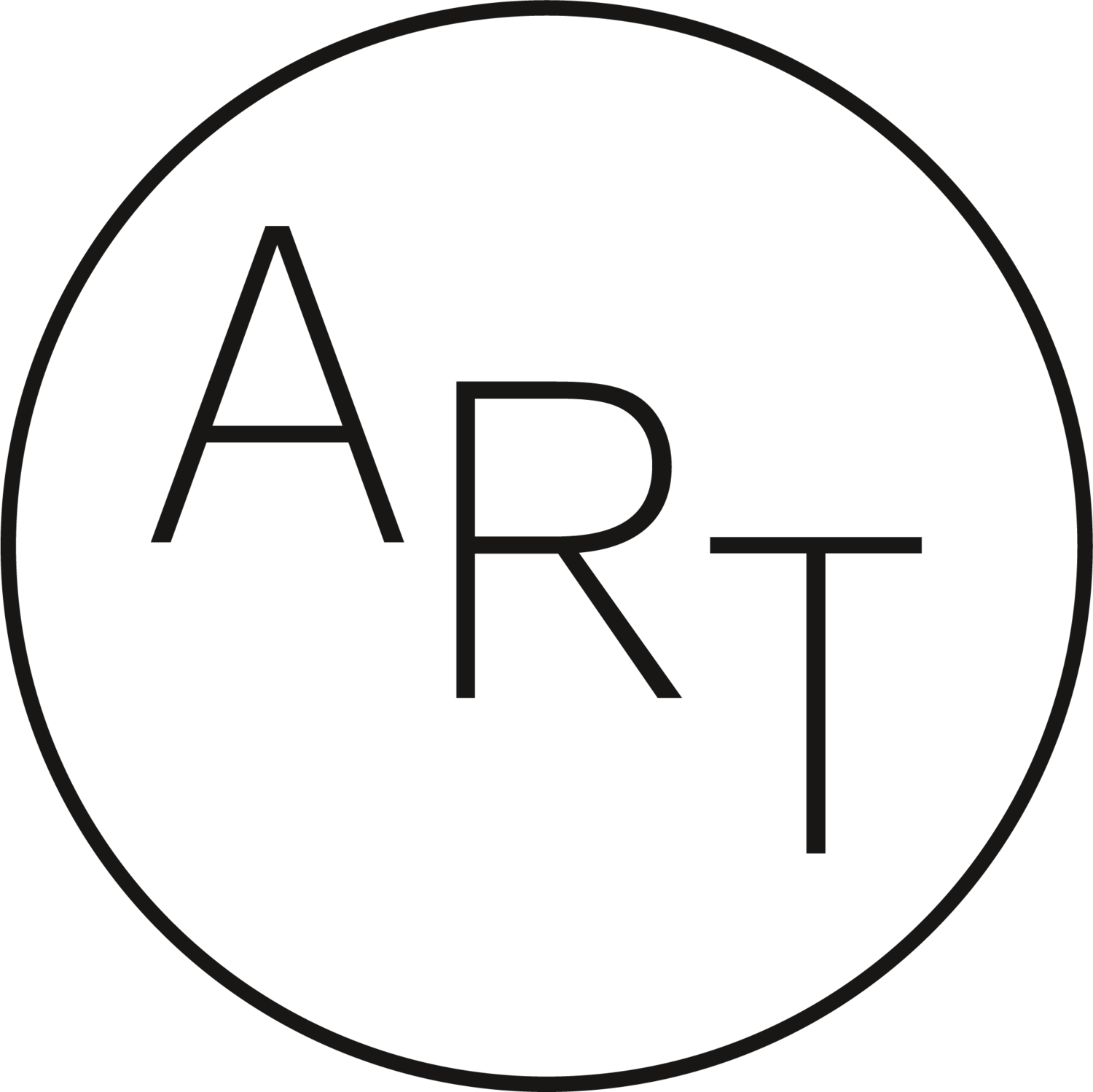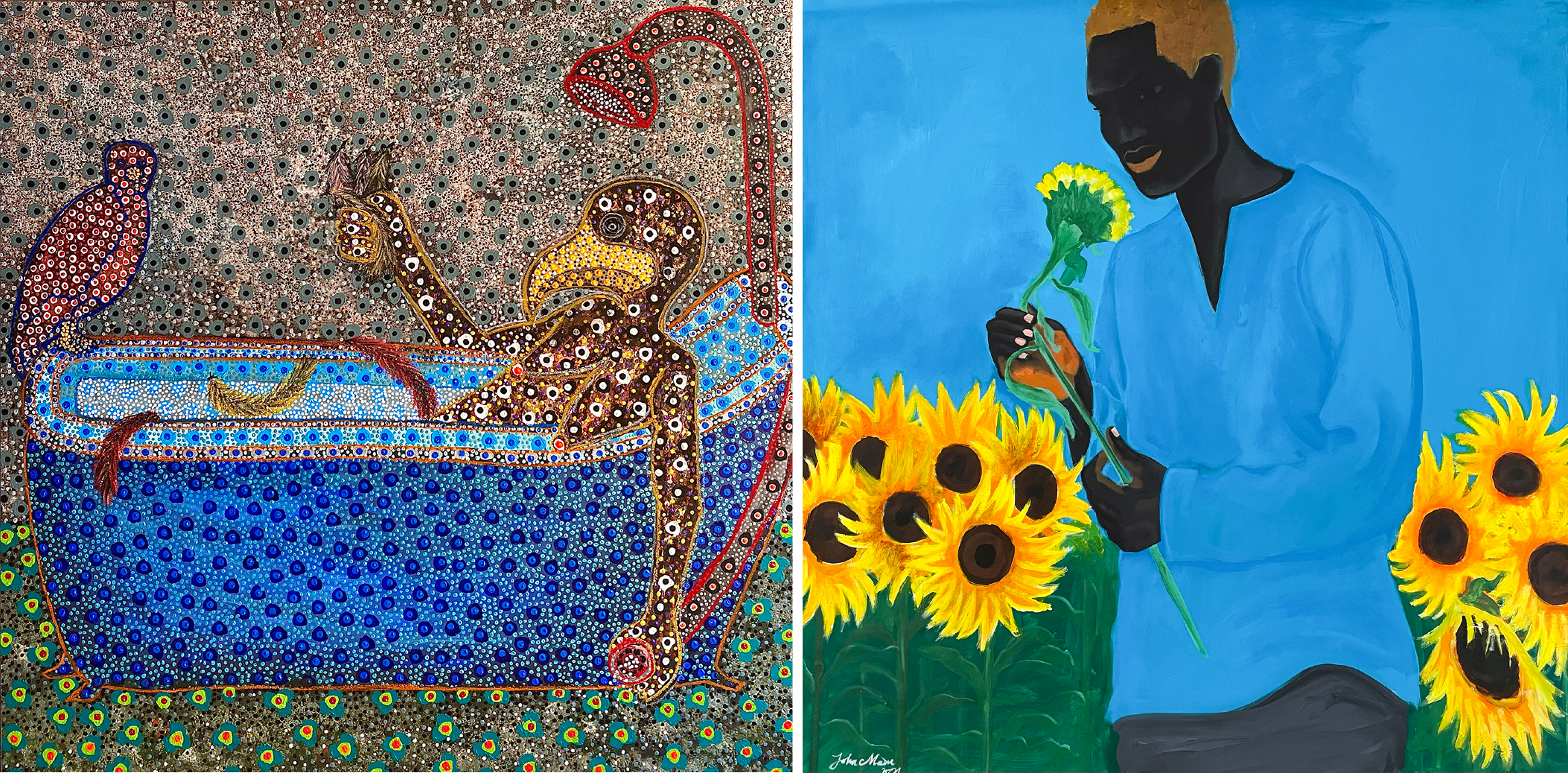Part of her ongoing Vibrational Strings series, this vibrant selection of new works will mark Roescheisen’s first solo exhibition at Boogie-wall Gallery in London, pursing the artist’s investigations on a shared human and spiritual condition through color.
October 12 – December 20, 2021
Boogie-wall Gallery | 193 Piccadilly, St. James’s, London W1J 9EU
Annina Roescheisen, The Spider, 2021. Mixed media, white ink and oil on aluminum canvas, 140 x 140 cm. Courtesy of the artist.
July 27, 2021 (London, United Kingdom) – Contemporary German multimedia artist Annina Roescheisen (b. 1982, Rosenheim) unveils all new paintings as part of her ongoing Vibrational Strings series. The nine new mixed media and ink paintings will be presented for the first time in an eponymous solo show on view from October 12—December 20, 2021.
These new works, produced over the past two years, pursue the artist’s ongoing exploration of the imperceptible’s influence over the physical and emotional self, as she materializes the countless vibrations that constitute the invisible world and that come to define our perception of ourselves and of others.
Once again, physicality expands as a central part of Roescheisen’s creative process. The artist’s body becomes an inherent part of the artwork, both object and subject of it, as its interactions with and reactions to its environment materialize in it. Her hand becomes the tool for her emotions, as they transpire through it and into the work. Seemingly leading her, yet subconsciously led by her, it unintentionally traverses, grazes, scrapes, caresses, scratches the canvas in a process that, like that of Flying Dragons, unfolds over dozens of consecutive hours, often entire days – only this time, each canvas is the accumulation of several such sessions, undergone over the course of over two months.
With time, layers add onto the aluminum canvas, often up to 8 or 9. Roescheisen alternates paint, minerals, dripping ink, and with this added texture, the physical layering comes to mirror the emotional layers, the cumulated waves, that it expresses. Each color, meticulously and circumstantially mixed by the artist herself, inherits an emotional meaning, or, as the artist explored in her Bridging Grey performative video work (2017—2019), a duality of meanings that add onto the textural tension of the work.
Annina Roescheisen, Blue Velvet (detail), 2021. Mixed media and ink on aluminum canvas, 140 x 140 cm. Courtesy of the artist.
Across each layer, using a feather and ink, she draws thousands of fine, floating lines, each uniquely positioned, emitting and oscillating with every flicker of her emotions. Roescheisen’s philosophical approach, already tinged with a thirst for experimentation, extends to the fields of music and quantum physics. Just as sound and magnetic waves have been conceptualized, infinitesimally yet unmeasurably impactful throughout our existence, the artist shares her theory of emotional waves, akin to the latter, whereby individuals act as emitting and receiving poles, sensitive to various, unique frequencies and fields that ultimately connect us to one another. Or as she interprets, “I make the invisible world emotionally visible.”
These vibrations, the visual translation of the latter, constitute Roescheinsen’s visual language. On the canvas, they form a visual symphony – akin to notes on a musical score, and where the artist is at once the composer and the conductor. Performed in front of the viewer, each painting acquires its own resonance, a varying vibration as he draws his eye and his body farther, then closer, to the painting. A quantum field filled with magnetic waves, each canvas achieves its own, inherent frequency, emitted onto the viewer and perceived in its own unique way, if at all, by him.
The first work in the series, Opening (2020)’s earthy tones softly guide the viewer into the artist’s vibrational field. In Shape Shifter (2021), 11 layers culminate into an eye opening, a red circle and beating core at the heart of the canvas. As the viewer bears nearer, faces appear in the background: hundreds, thousands of conversing vibrations that confer the work an intense frequency. The Spider (2021) plunges into the aquatic world. Red coral-like shapes and fine white feather strides populated the dominant blue, an overarching soul which for Roescheisen evokes skies and waters, and profound introspection. Delicately woven together, the forms take on their full sacred power and come to symbolize modesty, wisdom, and immortality. Calling to the reputed 1986 David Lynch neo-noir thriller, “a dream of strange desires wrapped inside a mystery story” as he himself describes, Blue Velvet (2021) is a call to nostalgia, to an imagined reality fed by desire and longing for the past. Connecting old and new frequencies, the work spins and fuses past, present and future. Contemplating her work, Roescheisen explains:
“I seek to erect a bridge that ignites our communication with the imperceptible, evoking new senses, new perceptions. The layers cannot be seen; the sounds cannot be heard; the magnetic waves cannot be touched; yet, like emotions, they can be sensed, and they can be felt.”
Building on her ongoing Flying Dragons (2019—2021) mixed media and ink painting series, presented for the first and only time at Athenessa Gallery, Los Angeles, in 2020, The Red Twine of Flying Dragons will be shown at the gallery, in its matured form, in a dedicated solo show from November 7—December 5, 2021.
---
NOTES TO EDITORS:
About Annina Roescheisen:
Annina Roescheisen (b. 1982, Rosenheim, Germany) is a multimedia fine artist living and working in New York and Munich. In her work, which ranges from video, drawing, and painting to installation and performance art, Roescheisen engages and nurtures investigations on a shared human, and spiritual, condition.
Building on the impact and symbolism of color in its ability to evoke human emotions, she addresses themes ranging from the self & the other, the inner & outer world, the visible & the invisible, dream & reality, while consistently suggesting shifts in perspective. Drawn to how the human body interacts with and reacts to its sensitive environment – colors, textures, and sounds – she places physicality at the root of her creative process. Her body becomes an inherent part of the artwork, both object and subject of it, whether performative or materialized. Exploring the imperceptible, she exposes the invisible, the intangible, and the inaudible’s transient yet boundless influence over our physical and emotional selves.
Roescheisen’s work has been exhibited in galleries and institutions worldwide. Notable solo exhibitions include Bridging Grey, Ki Smith Gallery, New York (2019); Black & Blue, Speerstra Gallery, Paris (2018); and What are you fishing for? MANA Contemporary Art Museum, New Jersey (2017). She has taken part in numerous group shows among which the 56th Venice Biennale (2015) and Salon Berlin – Museum Frieder Burda, Berlin (2019).
Since 2012, she has been continuously performing in Systema Occam by reputed French artist Xavier Veilhan, previously shown at the Delacroix Museum and Hermès Foundation, Paris, among others. Her 2015 video work, A Love Story, received wide international acclaim, conferring her multiple awards including the Award of Merit – Best Woman Filmmaker at the Best Short Film Festival (Los Angeles, 2015) and the International Award of Outstanding Excellence at the International Film Festival for Peace, Inspiration & Equality (IFFPIE, Jakarta, 2016).
Upcoming Annina Roescheisen Exhibitions:
Bridging Grey (photography installation from performative video piece, 2017—2019)
PHOTO LONDON art fair, Boogie-wall Gallery, London
September 9—12, 2021
The Red Twine of Flying Dragons
Athenessa Gallery, Los Angeles
November 7—December 5, 2021


































